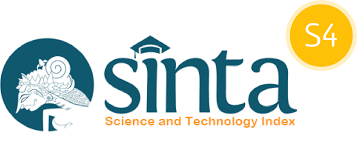Deep Learning-Based Sonar Image Object Detection System
DOI:
https://doi.org/10.34010/injiiscom.v6i2.14431Abstract
Sonar image object detection is an important part of underwater exploration, submarine rescue, hostile object reconnaissance, and other critical maritime tasks. Accurate and efficient detection of objects in sonar imagery plays a key role in ensuring operational success in these domains. The breakthrough of deep learning-related technologies has brought new opportunities for the development of sonar image object detection. By leveraging advanced machine learning techniques, researchers have developed systems capable of achieving higher accuracy and robustness compared to traditional detection methods. However, despite these advancements, the relevant systematic research and practical applications remain insufficiently explored. Traditional approaches often struggle with challenges such as noise, low resolution, and the dynamic underwater environment, which limit their effectiveness. In contrast, deep learning models, with their data-driven advantages, have demonstrated significant potential in overcoming these challenges by learning robust feature representations from large-scale datasets. To address these gaps, a sonar image object detection system is designed to meet the requirements of accuracy, speed, portability, extensibility, and deployment adaptability in real-world scenarios. The system architecture is modular, consisting of three interdependent subsystems: dataset generation, algorithm model training and testing, and model deployment. The dataset generation subsystem ensures high-quality annotated sonar data, which is critical for effective model training. The training and testing subsystem incorporates state-of-the-art deep learning algorithms to optimize detection performance. Finally, the deployment subsystem focuses on translating the trained models into practical applications, ensuring they meet operational requirements under diverse environmental conditions. The system has been applied to underwater suspicious object detection tasks, addressing a range of scenarios requiring precise identification and localization of targets. The experimental results demonstrate that the object detection system achieves reliable and accurate performance, providing good test data and exhibiting excellent application outcomes. This work contributes to advancing the field of sonar image object detection, paving the way for future innovations in underwater exploration and related disciplines.
References
Abadi, M., Agarwal, A., Barham, P., Brevdo, E., Chen, Z., Citro, C., ... & Zheng, X. (2016). Tensorflow: Large-scale machine learning on heterogeneous distributed systems. arXiv preprint arXiv:1603.04467.
Bochkovskiy, A., Wang, C. Y., & Liao, H. Y. M. (2020). Yolov4: Optimal speed and accuracy of object detection. arXiv preprint arXiv:2004.10934.
Callow, H. J. (2003). Signal processing for synthetic aperture sonar image enhancement.Zhang, H., Hu, J., Xie, J., Wang, S., & Cao, Y. (2019). A solid-state chemical method for synthesizing MgO nanoparticles with superior adsorption properties. RSC advances, 9(4), pp. 2011-2017.
Chen, K., Wang, J., Pang, J., Cao, Y., Xiong, Y., Li, X., ... & Lin, D. (2019). MMDetection: Open mmlab detection toolbox and benchmark. arXiv preprint arXiv:1906.07155.
Dong, B., & Wang, X. (2016). Comparison deep learning method to traditional methods using for network intrusion detection. In 2016 8th IEEE international conference on communication software and networks (ICCSN) (pp. 581-585). IEEE.
Fan, Z., Xia, W., Liu, X., & Li, H. (2021). Detection and segmentation of underwater objects from forward-looking sonar based on a modified Mask RCNN. Signal, Image and Video Processing, 15(6), 1135-1143.Nandatamadini, F., Karina, S., Nandiyanto, A. B. D., & Ragadhita, R. (2019). Feasibility study based on economic perspective of cobalt nanoparticle synthesis with chemical reduction method. Cakra Kimia (Indonesian E-Journal of Applied Chemistry), 7(1), pp. 61-68.
Gao, S. H., Cheng, M. M., Zhao, K., Zhang, X. Y., Yang, M. H., & Torr, P. (2019). Res2net: A new multi-scale backbone architecture. IEEE transactions on pattern analysis and machine intelligence, 43(2), 652-662.
He, K., Zhang, X., Ren, S., & Sun, J. (2016). Deep residual learning for image recognition. In Proceedings of the IEEE conference on computer vision and pattern recognition (pp. 770-778).
Hożyń, S. (2021). A review of underwater mine detection and classification in sonar imagery. Electronics, 10(23), 2943.
Jankovic, P., Protić, M., Jovanovic, L., Bacanin, N., Zivkovic, M., & Kaljevic, J. (2024, May). Yolov8 utilization in occupational health and safety. In 2024 Zooming Innovation in Consumer Technologies Conference (ZINC) (pp. 182-187). IEEE.
Kotwal, J., Kashyap, R., & Pathan, S. (2023). Agricultural plant diseases identification: From traditional approach to deep learning. Materials Today: Proceedings, 80, 344-356.
Lin, T. (2017). Focal Loss for Dense Object Detection. arXiv preprint arXiv:1708.02002.Garrett, D. E. (2012). Potash: deposits, processing, properties and uses. Springer Science & Business Media.
Lin, T. Y., Dollár, P., Girshick, R., He, K., Hariharan, B., & Belongie, S. (2017). Feature pyramid networks for object detection. In Proceedings of the IEEE conference on computer vision and pattern recognition (pp. 2117-2125).
Lin, T. Y., Maire, M., Belongie, S., Hays, J., Perona, P., Ramanan, D., ... & Zitnick, C. L. (2014). Microsoft coco: Common objects in context. In Computer Vision–ECCV 2014: 13th European Conference, Zurich, Switzerland, September 6-12, 2014, Proceedings, Part V 13 (pp. 740-755). Springer International Publishing.
Lou, G., Zheng, R., Liu, M., & Zhang, S. (2020, October). Automatic target recognition in forward-looking sonar images using transfer learning. In Global Oceans 2020: Singapore–US Gulf Coast (pp. 1-6). IEEE.Dobrucka, R. (2018). Synthesis of MgO nanoparticles using Artemisia abrotanum herba extract and their antioxidant and photocatalytic properties. Iranian Journal of Science and Technology, Transactions A: Science, 42(2), pp. 547-555.
Paszke, A., Gross, S., Massa, F., Lerer, A., Bradbury, J., Chanan, G., ... & Chintala, S. (2019). Pytorch: An imperative style, high-performance deep learning library. Advances in neural information processing systems, 32.
Redmon, J. (2016). You only look once: Unified, real-time object detection. In Proceedings of the IEEE conference on computer vision and pattern recognition.
Wang, M., & Deng, W. (2018). Deep visual domain adaptation: A survey. Neurocomputing, 312, 135-153.
Wang, Y., Liu, J., Yu, S., Wang, K., Han, Z., & Tang, Y. (2021, October). Underwater Object Detection based on YOLO-v3 network. In 2021 IEEE international conference on unmanned systems (ICUS) (pp. 571-575). IEEE.Nassar, M. Y., Mohamed, T. Y., Ahmed, I. S., & Samir, I. (2017). MgO nanostructure via a sol-gel combustion synthesis method using different fuels: an efficient nano-adsorbent for the removal of some anionic textile dyes. Journal of Molecular Liquids, 225, pp. 730-740.
Xie, S., Girshick, R., Dollár, P., Tu, Z., & He, K. (2017). Aggregated residual transformations for deep neural networks. In Proceedings of the IEEE conference on computer vision and pattern recognition (pp. 1492-1500).
Zhang, H., & Wang, J. (2019). Towards adversarially robust object detection. In Proceedings of the IEEE/CVF International Conference on Computer Vision (pp. 421-430).

















